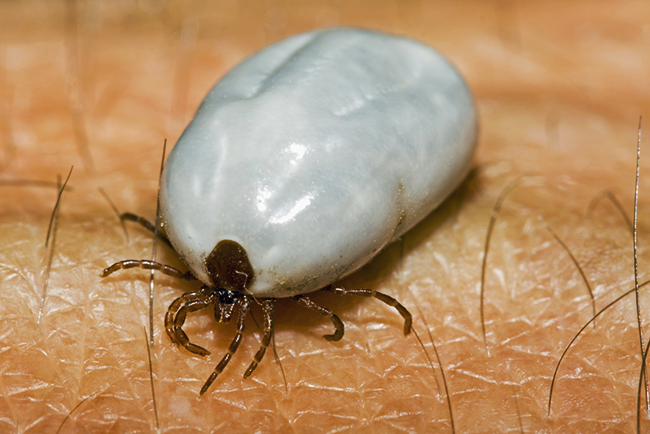Be Aware Of Ticks This Summer

Most pet owners are well aware of the importance of protecting your pets from ticks but the risk to your own health is a very real one. Recently experts have warned that the number of ticks in the UK is on the increase and with a female tick able to lay up to 3,000 eggs at a time this number will only continue to increase! The south of England is considered a high risk area of for ticks.
There are over 20 tick species in the UK and over 800 worldwide. A tick is not an insect – it’s an arachnid arthropod parasite with four pairs of legs. Abundant from April to October ticks are most common in rural locations such as forests woods and grassland however urban areas and gardens can still harbour the blood-sucking, disease-carrying arachnids
Ticks bite animals and humans to feed on blood they need to stay alive. Tick saliva contains an anaesthetic which means you and your pet will not feel the bite. Ticks don't jump or fly, but climb on to your clothes or skin if you brush against them. Lyme disease, or Lyme borreliosis, is a bacterial infection spread to humans by infected ticks. It's estimated there are 2,000 to 3,000 new cases of Lyme disease in the UK each year.
Lyme disease is treatable with antibiotics if it's diagnosed early. However neurological problems and joint pain can develop months or years later if it's left untreated. In the worst cases, it can be fatal. Symptoms usually take between three days to six weeks to appear so what do you need to look out for?
The general rule is that the risk of infection is greater should the tick remain attached for more than 24 hours. In 35-50% of cases, a red ring-shaped rash appears at the site of the tick bite within three weeks. This rash slowly expands, fades in the middle and then disappears. During this phase, flu-like symptoms appear: headache, exhaustion, pain and swelling in the joints. Lyme disease can cause problems affecting your nervous system and heart problems. A course of antibiotics is often required to kill the bacteria left by the tick.
Protecting Yourself From Tick Bites
Keep your grass short and rake up fallen leaves. Consider wood chips or gravel as an alternative to lawns.
If you are a keen walker remain on footpaths and tuck your trousers tightly into your socks. Reducing exposed skin in potential tick infested areas can help reduce the chance of being bitten and use an insect repellent on any exposed skin.
Inspect your skin for ticks at the end of day making sure ticks are not brought home on your clothes and remove any you find immediately.
Remember to check your pets as well! Fur is great transportation for ticks!
All though not a pest these nasty critters can make you and your family very poorly so over the summer months and summer holidays stay tick aware!

